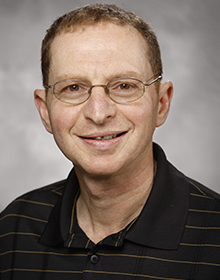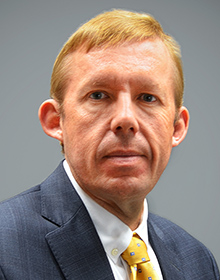Sandia researchers Carlos Gutierrez, Alec Talin, and Thomas Mattsson have been elected fellows of the American Physical Society. The honor is afforded each year to no more than one half of 1 percent of the members of the society.

Alec, from Sandia/California, was honored “for the discovery of new electronic transport phenomena, materials, and devices.” This closely relates to his work in understanding charge transport in a variety of materials and systems, such as semiconductor nanowires, metal-semiconductor contacts, solid electrode-electrolyte interfaces and metal-organic nanoporous frameworks. Alec is also a principal founding editor of the journal MRS Communications. He was nominated by the APS Division of FIAP (Forum on Industrial and Applied Physics).
Says Alec, “I have benefited tremendously from early investments by Sandia in the development of experimental tools and theoretical foundations for understanding charge transport in nanomaterials and nanodevices. The fellowship is also a recognition of the collaborators I found at Sandia, NIST, the University of Maryland, and other institutions who have made amazing contributions to my research, and my wife and family’s support throughout my career.”
Carlos received his PhD at Johns Hopkins University in 1990 and spent two years at the Naval Research Laboratory in Washington, D.C., where he used the then-new techniques of molecular beam epitaxy to grow high-quality magnetic films and multilayer materials. His work contributed to the foundation of spintronics.
In 1992, he joined the faculty at Texas State University, where he led development of an innovative curriculum with a focus on materials. He developed collaborations with industry that offered job opportunities for his students. In 2005, he came to Sandia to manage the Interface Sciences department, and then in 2012 was selected to direct the Sandia Nanoscale Sciences department. His career-long commitment to diversity has helped recruit underrepresented minorities, and his recognition that outreach activities must begin as early as possible led him to create programs to engage middle school students in science; these have been adopted by university chapters across the country. He has jointly authored research contributions to magnetic, electronic, graphene, and energy materials as well as to surface physics, resulting in numerous joint activities with industry. “I remain active in APS, recently elected as vice-chair for APS GERA [topical group on energy research and applications] and a member of APS PoPA [panel on public affairs],” says Carlos.

Carlos was cited for “contributions to the understanding of magnetic thin film physics, the development of innovative materials-physics education programs, and for research and development leadership in transitioning fundamental materials understanding into a broad range of energy and other national security applications.” He was nominated by the Forum on Industrial and Applied Physics.
“At least two Sandians deserve this honor,” he quips about the three newly appointed fellows. “Isn’t there a law against forced self-incrimination?”

Thomas was cited “for contributions to the fundamental understanding of condensed matter at extreme temperatures and pressures through molecular dynamics and electronic structure simulations.” He was nominated by the Division of Computational Physics.
“When it comes to my feelings about being selected an APS fellow, it is of course very exciting,” says Thomas. “I am deeply honored for the recognition of my research in computational physics. I am also very grateful to my collaborators over the years.”
The American Physical Society represents more than 50,000 physicists in academia, national laboratories, and industry in the United States and throughout the world. Its fellowship program “recognizes members who have made exceptional contributions to the physics enterprise, including outstanding physics research, important applications of physics, leadership in or service to physics, or significant contributions to physics education.”